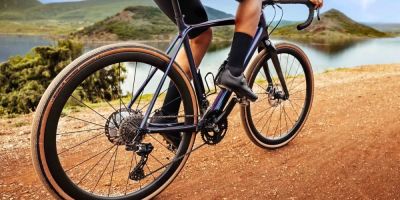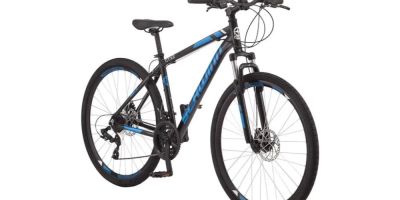Cycling is one of the most enjoyable and rewarding ways to stay fit, explore the outdoors, and even commute. However, like any physical activity, there are risks involved, and cycling injuries can be common if you're not careful. After years of cycling myself, I've learned a lot about how to prevent injuries while riding and how to stay safe on the road. From proper gear to technique adjustments, there are several key strategies you can incorporate into your routine to reduce the risk of injury.
1. Importance of Proper Bike Fit
The first step to preventing cycling injuries is ensuring that your bike is properly fitted to your body. A poorly fitted bike can lead to discomfort, muscle strain, and even serious injuries over time. When I first started cycling, I didn’t realize how important bike fit was, and I ended up with sore knees after every ride. It wasn't until I visited a local bike shop for a professional fitting that I truly understood the difference a proper bike setup can make.
During the fitting, the technician adjusted the seat height, handlebar position, and pedal alignment to suit my body type and riding style. This adjustment helped me achieve a more efficient pedal stroke and improved my posture, reducing the strain on my knees and back. A good bike fit can make cycling more comfortable and reduce the risk of overuse injuries, such as tendonitis or muscle strains.
2. Invest in the Right Gear
Another critical aspect of preventing cycling injuries is wearing the right gear. While cycling may seem like a simple activity, having the proper equipment can drastically reduce the likelihood of injury. The most important piece of gear to consider is a high-quality helmet. I've had my share of close calls with traffic, and I know how essential it is to protect my head. A properly fitted helmet can prevent serious head injuries in the event of a fall or accident.
Besides a helmet, it’s important to wear appropriate cycling shoes, gloves, and clothing. Cycling shoes with stiff soles help to transfer power efficiently while pedaling, while gloves provide padding and grip, reducing the risk of hand numbness or blisters. As for clothing, choose breathable, moisture-wicking fabrics to prevent chafing and discomfort during long rides.
3. Warm Up and Stretch
Many injuries occur simply because muscles and joints aren't prepared for the strain of cycling. Before you jump on your bike, it’s essential to perform a proper warm-up and stretch. I always start with a few minutes of light cardio, such as a gentle jog or brisk walk, to get my blood flowing and loosen up my muscles.
After that, I focus on dynamic stretches that target the key muscles used in cycling, such as the hamstrings, quads, calves, and hip flexors. Stretching helps increase flexibility and mobility, which reduces the chances of muscle strains and ligament injuries. I’ve noticed that stretching before and after my rides has improved my overall flexibility and made cycling much more comfortable.
4. Build Strength and Endurance
Building strength in key muscle groups, such as the legs, core, and lower back, is another essential component of injury prevention. Cycling alone can provide a great cardiovascular workout, but it’s important to complement it with strength training exercises. I make sure to add exercises like squats, lunges, planks, and leg presses to my routine. Strengthening these muscle groups helps improve my stability on the bike, which reduces the risk of overuse injuries, such as IT band syndrome or patellar tendinitis.
Endurance also plays a big role in injury prevention. Over time, as I built up my stamina, I noticed that I felt less fatigued during long rides. Fatigue can cause poor posture and technique, which increases the likelihood of injury. By gradually increasing the intensity and duration of my rides, I’ve been able to strengthen my cardiovascular system and improve my overall cycling performance.
5. Pay Attention to Your Riding Technique
Good riding technique is crucial for avoiding injuries. One of the most common mistakes I see among new cyclists is poor posture. It’s easy to get lazy with your body positioning, but keeping your back straight and your core engaged can make a huge difference in how your body feels after a ride.
I learned that maintaining a slight bend in my elbows and keeping my shoulders relaxed prevents unnecessary strain on my upper body. Similarly, keeping my knees in line with my pedals and avoiding excessive pressure on the handlebars helps distribute the effort evenly across my body. Poor technique can lead to aches and pains in the neck, back, or knees, so it’s essential to stay mindful of your form during each ride.
6. Know Your Limits and Listen to Your Body
One of the most valuable lessons I've learned as a cyclist is the importance of listening to my body. It’s easy to get caught up in trying to achieve personal bests or push through a tough ride, but this can lead to overexertion and injury. If you're feeling pain or discomfort during a ride, it’s essential to stop and assess the situation. I’ve learned that taking breaks and resting when needed is just as important as the ride itself.
Additionally, it’s important to gradually increase your distance and intensity. I always ensure that I’m not pushing myself too hard too quickly. This gradual progression allows my body to adapt to the physical demands of cycling, which significantly reduces the risk of overuse injuries.
Cycling can be a fantastic way to stay fit and explore new places, but injury prevention is key to ensuring that you can enjoy it for years to come. By focusing on bike fit, wearing the right gear, warming up, strengthening your muscles, and maintaining good technique, you can significantly reduce the risk of cycling-related injuries. Remember, taking care of your body is just as important as the ride itself. If you’re looking for more tips or the best gear to support your cycling journey, visit Healthy Cycling for expert recommendations and products.










